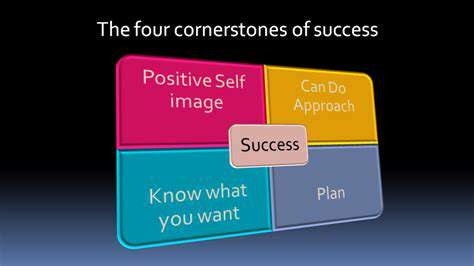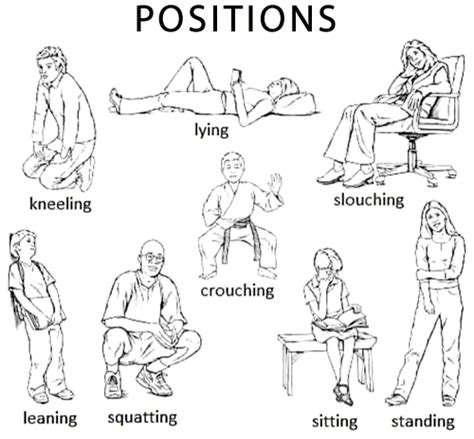Taking Your Puppy's Obedience Training Outdoors
Understanding Distractions in Outdoor Training
The great outdoors presents a sensory feast for curious pups. Young dogs particularly, while developing concentration skills, encounter countless attention-grabbing stimuli - from rustling leaves to intriguing scents. Successful training begins with identifying these potential distractions and recognizing your puppy's unique sensitivities. Some respond more to visual triggers while others fixate on aromatic trails.
Establishing consistency forms the cornerstone of effective outdoor training. Gradually introducing controlled distractions while maintaining reward-based techniques builds mental resilience. Consider starting in familiar spaces before progressing to more stimulating environments, always matching challenges to your puppy's current capabilities.
Strategies for Minimizing Distractions
While eliminating all distractions proves impossible, strategic planning significantly reduces their impact. Selecting training locations carefully - perhaps a quiet neighborhood park during less busy hours - creates an optimal learning environment. Timing matters too; aligning sessions with your puppy's natural energy peaks enhances focus.
Physical boundaries like training leads or designated areas help maintain attention. These controlled spaces allow exploration while keeping distractions manageable. The key lies in balancing freedom with structure, always prioritizing consistency in your approach.
Developing Focus and Impulse Control
Building concentration skills requires patience and creativity. Reward desired behaviors immediately while gently redirecting attention from distractions. Keep sessions brief but impactful, using high-value incentives to maintain engagement. Incorporating focus-building games makes learning enjoyable while strengthening essential skills.
Progressive challenges work wonders. Begin with basic commands in low-distraction settings, gradually increasing difficulty as skills improve. Celebrate small victories - each moment of maintained focus represents meaningful progress in your puppy's development.
Reinforcing Positive Responses to Distractions
Acknowledging every success, no matter how small, reinforces good habits. Immediate rewards for ignoring distractions create powerful positive associations. Use clear, consistent cues to help your puppy understand expected behaviors.
Systematic exposure to increasingly complex environments builds confidence. This measured approach allows your puppy to develop coping strategies while feeling secure in their training foundation.
Adapting Commands for Diverse Outdoor Settings
Understanding the Impact of Terrain
Effective outdoor training requires terrain awareness. Smooth park lawns demand different approaches than rocky trails or sandy beaches. Each environment presents unique challenges that influence command execution. For instance, recall commands may need adjustment based on ground stability - a dog might respond differently on slippery surfaces versus firm terrain.
Environmental factors also affect movement dynamics. Commands requiring balance or precise positioning might need modification depending on surface conditions. Observing how your puppy adapts naturally to different terrains informs appropriate training adjustments.
Addressing Environmental Distractions
The outdoor world teems with potential attention-grabbers. Systematic exposure proves most effective - begin with minimal distractions, slowly increasing complexity as skills develop. This graduated approach builds confidence while maintaining training effectiveness.
Understanding your puppy's specific distraction triggers allows for targeted training. Some respond strongly to moving objects while others fixate on sounds or scents. Customizing your approach to these individual tendencies yields better results.
Modifying Commands for Different Surfaces
Surface texture dramatically influences command execution. Slippery pavements might require slower movements or additional support, while soft grass allows for more energetic responses. Adjust your expectations and techniques accordingly.
Positioning commands like stay may need surface-specific reinforcement. A dog might hold position differently on uneven ground versus flat surfaces. Recognizing these variations helps tailor your training approach.
Utilizing Positive Reinforcement Effectively Outdoors
Outdoor environments often demand higher-value rewards to maintain focus. Experiment with different treat types to discover what motivates your puppy most in distracting settings. Keep rewards easily accessible for immediate reinforcement.
Varying reward types - treats, praise, or play - prevents predictability and maintains engagement. The key lies in discovering what truly captures your puppy's attention in each unique outdoor scenario.
Implementing Varying Training Schedules
Optimal training times fluctuate with weather and puppy energy levels. Early mornings often work well before temperatures rise and distractions multiply. Monitor your puppy's natural rhythms to identify ideal training windows.
Adjust session duration based on environmental conditions. Hot pavement or extreme cold might necessitate shorter, more frequent sessions. Always prioritize your puppy's comfort and safety.
Creating a Safe and Controlled Environment
Thoughtful location selection forms the foundation of successful outdoor training. Scout potential areas beforehand, noting potential hazards or excessive distractions. Begin in familiar spaces before venturing to more challenging environments.
Always have contingency plans for unexpected situations. Whether encountering unfamiliar animals or weather changes, preparedness ensures positive training experiences. This proactive approach builds confidence for both trainer and puppy.
Troubleshooting Common Outdoor Training Challenges
Common Training Challenges in Outdoor Environments
Outdoor training obstacles differ significantly from indoor challenges. The abundance of natural stimuli requires adapted techniques. Selecting appropriate training locations forms the first line of defense against overwhelming distractions.
Environmental factors like weather conditions significantly impact training effectiveness. Being attuned to your puppy's comfort levels ensures productive sessions. When conditions become unfavorable, flexibility proves more valuable than rigid adherence to schedules.
Addressing Specific Outdoor Training Issues
Leash manners often deteriorate outdoors due to heightened excitement. Consistent positive reinforcement for proper walking behavior creates lasting change. Equipment choices like front-clip harnesses can provide additional control without discomfort.
Reactivity training requires patience and strategic exposure. Begin with considerable distance from triggers, gradually decreasing space as comfort grows. Celebrate every calm response, building positive associations with potential stressors.
Maintaining focus amidst distractions involves careful progression. Master commands in controlled settings before testing them in challenging environments. Breaking complex behaviors into manageable steps prevents frustration while ensuring steady progress.
Read more about Taking Your Puppy's Obedience Training Outdoors
Hot Recommendations
- The Impact of Early Socialization on a Dog's Interaction with Other Animals
- Car Travel and Puppy Socialization: Making the Journey a Positive Experience
- The Importance of Early Environmental Exposure for Puppy Development
- Taking Your Puppy to the Vet: Positive Socialization Strategies
- Making Training a Positive Experience for Your Puppy
- Public Transportation and Puppy Socialization: A Step by Step Guide
- Safe Socialization: Allowing Others to Pet Your Puppy
- Helping a Puppy Who Struggles with "Stay"
- Positive Puppy Interactions: Making Meetings with New Friends Fun
- No Treats Needed? Training Basic Commands with Verbal Praise











